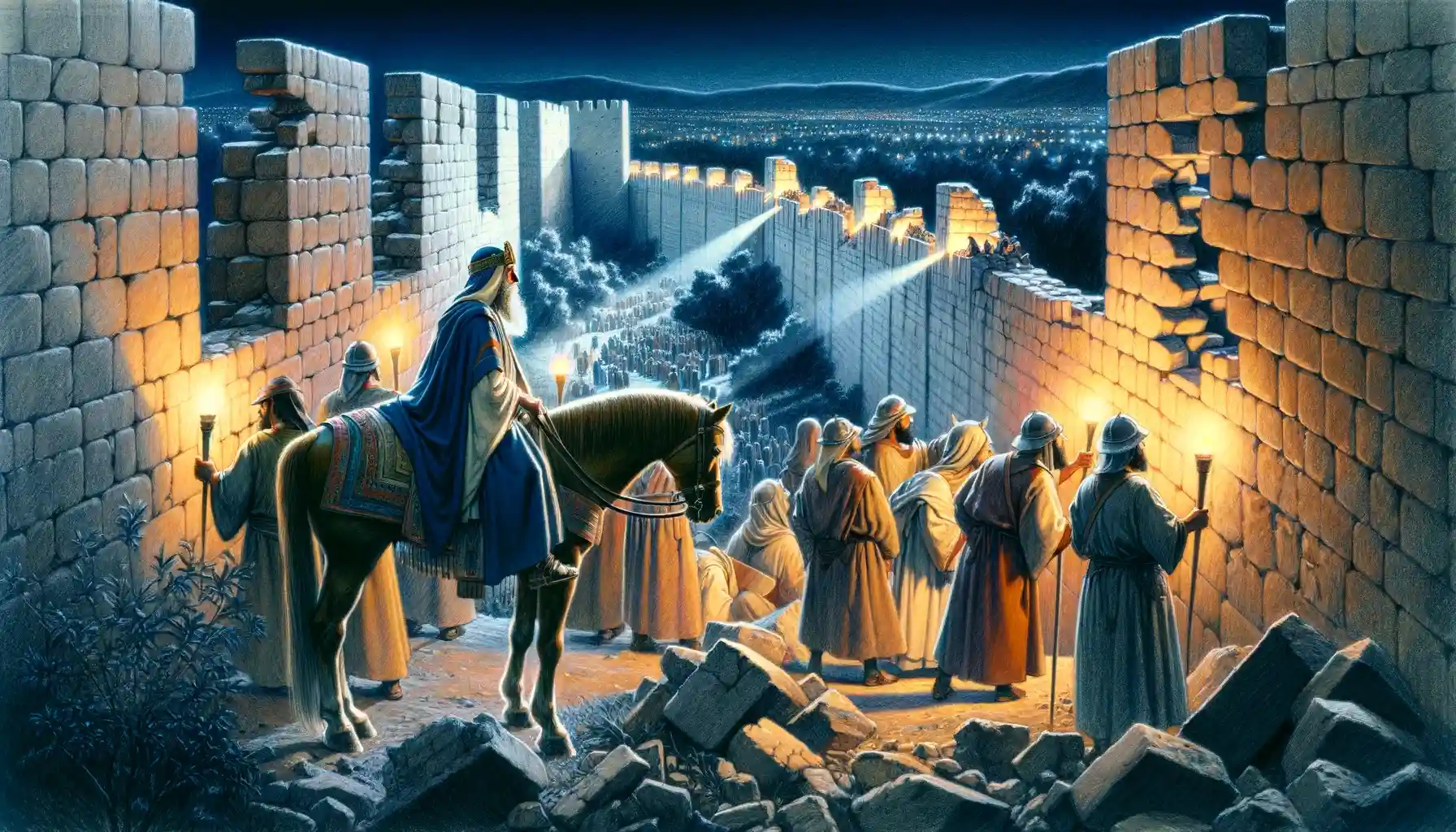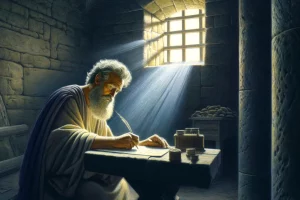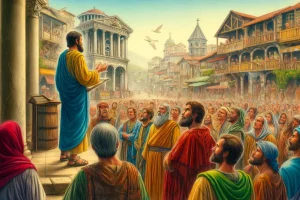
The Book of Nehemiah
The Book of Nehemiah is a significant historical and theological text in the Hebrew Bible and the Christian Old Testament, focusing on Nehemiah’s efforts to rebuild Jerusalem’s walls and reform the community. Here are some concise key facts about the Book of Nehemiah:
- Title and Position: Named after its main character, Nehemiah, who served as the governor of Judah under the Persian Empire. Nehemiah is part of the “Writings” (Ketuvim) in the Hebrew Bible and often paired with the Book of Ezra in the Christian Old Testament.
- Authorship and Date: While traditionally attributed to Nehemiah himself, the book may also contain records compiled by others. It is generally believed to have been written in the mid-5th century BC.
- Structure and Content: The book can be divided into two main parts:
- Rebuilding of the Wall (Chapters 1-7): Nehemiah learns of Jerusalem’s plight, secures permission from King Artaxerxes to return, and leads the effort to rebuild the city’s walls despite opposition.
- Reforms and Covenant Renewal (Chapters 8-13): Focuses on spiritual renewal through the reading of the Law by Ezra, social and economic reforms, and a renewed covenant commitment by the people.
- Main Themes:
- Leadership and Determination: Nehemiah’s leadership is characterized by pragmatism, fervent prayer, and a strong commitment to God’s laws.
- Community and Restoration: The book emphasizes the importance of community cooperation in rebuilding efforts and spiritual revival.
- Opposition and Perseverance: Nehemiah and his workers face significant external and internal opposition, yet they persevere to rebuild the walls.
- Theological Significance:
- Nehemiah illustrates the theme of God’s providence and the importance of faithful leadership in achieving divine purposes.
- The book highlights the centrality of the Law (Torah) in restoring and maintaining the covenant community’s identity.
- Modern Relevance: Nehemiah offers valuable lessons on leadership, the importance of collective action in community projects, and the role of faith in overcoming challenges.
The Book of Nehemiah is a poignant narrative in the Hebrew Bible and the Christian Old Testament that details Nehemiah’s leadership in rebuilding Jerusalem’s walls and reforming the community after the Babylonian exile. It provides insights into the challenges of leadership, community rebuilding, and spiritual renewal. Here is a comprehensive analysis of the Book of Nehemiah, exploring its structure, content, major themes, and theological implications.
Structure and Content
1. Rebuilding the Walls (Chapters 1-7):
- Nehemiah’s Call and Arrival in Jerusalem: The book opens with Nehemiah, a cupbearer to King Artaxerxes in Persia, learning about the desolate condition of Jerusalem. Moved by this news, he prays and receives the king’s permission to return to Jerusalem to oversee the rebuilding of the city’s walls.
- Organization and Construction: Nehemiah’s effective leadership and organizational skills come to the forefront as he mobilizes the people, assigns tasks, and manages the construction despite facing opposition from neighboring adversaries like Sanballat and Tobiah.
- Completion and Dedication: The walls are completed in just 52 days, a feat that Nehemiah attributes to divine assistance. This rapid reconstruction enhances the morale and security of the Jewish community.
2. Reforms and Renewal (Chapters 8-13):
- Spiritual Revival: Ezra the scribe reads from the Law, leading to a spiritual revival among the people. This event includes a public confession of sins and a collective reaffirmation of the covenant.
- Social and Economic Reforms: Nehemiah addresses social injustices, particularly issues related to the exploitation of the poor. He confronts the nobles and officials, ensuring that unfair practices are abolished.
- Covenant Renewal: The people pledge to adhere to God’s laws, avoid intermarriages with pagan nations, observe the Sabbath, and support the Temple.
- Nehemiah’s Final Reforms: Upon returning from a visit to Persia, Nehemiah enforces the covenant and ensures the proper functioning of the Temple services.
Major Themes
1. Leadership and Governance:
- Nehemiah exemplifies strong, prayerful leadership characterized by strategic planning and decisive action. His approach to handling opposition and rallying the community is highlighted throughout the narrative.
2. Community and Cooperation:
- The book emphasizes the importance of communal effort and unity in achieving significant tasks. The rebuilding of the walls is portrayed as a collective achievement that requires the participation of all segments of society.
3. Spiritual Renewal and Covenant Faithfulness:
- A central theme is the community’s spiritual renewal through re-engagement with the Torah. Nehemiah’s reforms are aimed at reestablishing covenant fidelity and ensuring that religious practices align with the Law.
4. Social Justice:
- Nehemiah’s concern for justice is evident in his reforms to alleviate economic oppression and his efforts to restore integrity in the community’s social and economic dealings.
Theological Significance
Nehemiah’s narrative demonstrates God’s ongoing involvement with His people, emphasizing that spiritual renewal and social reform are integral to fulfilling God’s covenant. The book serves as a reminder of the importance of adhering to God’s law as a cornerstone of community life.
Conclusion
The Book of Nehemiah provides a dynamic model of leadership and community organization that is deeply rooted in faith and prayer. It addresses timeless issues such as leadership, social justice, and the importance of maintaining spiritual and communal integrity. Nehemiah’s story encourages contemporary readers to consider how faith can inform practical responses to both spiritual and societal challenges.
Tag:Biblical Narrative, Book of Nehemiah, community rebuilding, Covenant Renewal, economic justice, Ezra, governance, Jerusalem, Jewish community, Law of Moses, Leadership, Nehemiah, Old Testament, opposition, Persian Empire, post-exilic period, prayer, Sanballat, social reform, spiritual renewal, Tobiah, wall reconstruction



